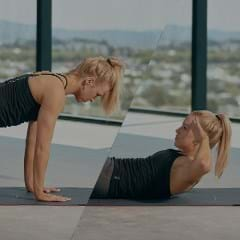Exercise reduces toxic abdominal fat
In 2006 the Journal of the American Medical Association (JAMA) reported on research conducted at Northwestern University, involving 17,500 patients over 30 years. It found that being overweight in mid life substantially increased the risk of dying of heart disease later in life. The article said: ‘… fat tissue is a dynamic organ that is continually producing hormones and chemical messengers that increase the risk of blood clots and cause insulin resistance.’
In October 2005, the Journal of Applied Physiology revealed that a study conducted at Duke University Medical Centre had shown that just three hours of brisk walking a week could prevent the accumulation of deep abdominal fat. The build-up of abdominal fat was linked to a higher risk of type 2 diabetes, high cholesterol and heart disease. Exercise now, said the lead researcher, Dr Cris Slentz, and you might not be 20 pounds heavier in five years.
Exercise heals
Regular exercise speeds the healing of wounds in older adults by up to 20 per cent, which reduces the risk of infection. An Ohio State University study — recorded in the Journal of Gerontology in 2007 — reported that among people aged between 55 and 77, the body’s ability to heal wounds is faster in those who exercise than in those who don’t. On average, complete healing occurred in 29 days for the exercisers against 39 days for the non-exercisers. This is important: the faster a wound heals, the less it is exposed, and the less chance there is that it will become infected.
Exercise is good for your career
Recently, theladders.com, an online recruiting company for the $100,000+ employment market, reported that of 1000 senior executives in the United States, 75 per cent believed that ‘physical fitness is critical for career success at the executive level’. Seventy-five per cent also said that in today’s workplace, being overweight is a serious career impediment.
Exercise can prevent and even cure type 2 diabetes
A report in the November 2005 Journal of the American Association of Occupational Health Nurses noted one university study in which the majority of diabetic and pre-diabetic patients in a two-year diet and exercise program were no longer diabetic.
Young women who exercise in the year before they become pregnant greatly reduce their chance of developing gestational type 2 diabetes. Epidemiology reported in January 2006 that a study at the University of Washington found that women who exercised vigorously during that time frame reduced their chances by 81 per cent; women who exercised moderately reduced their risk by 59 per cent.
Exercise is essential for your arteries
This is one of the best-researched areas of exercise benefit. Literally thousands of studies over the past several decades have shown the protective effects of exercise against cardiovascular disease. The American Heart Association sums it up as follows: ‘Physical inactivity is a major risk factor for developing coronary artery disease. It also contributes to other risk factors, including obesity, high blood pressure, high triglycerides, a low level of HDL (“good”) cholesterol and diabetes. Even moderately intense physical activity such as brisk walking is beneficial when done regularly for a total of 30 minutes or longer on most days.’
A 2005 study at Indiana University, published in the European Journal of Applied Physiology, has shown that exercising after a high-fat meal not only reverses damage to arteries, but also improves their function compared to before the meal. Professor Janet P Wallace, co-author of the study, says that for a period of four to six hours after a high-fat meal (i.e. generally just in time for the next meal), our arteries look just like those of a person who has heart disease. The oxidation of high-fat meals causes stress markers that harm the arteries and contribute to heart disease, diabetes, Alzheimer’s and cancer. ‘What our study showed,’ she says, ‘is that when you exercise after that meal, it doesn’t look like a sick artery anymore.’
These exercise benefits have been extracted from Fighting Globesity: A Practical Guide to Personal Health and Sustainability (Random House, 2007), by Phillip Mills and his wife Dr Jackie Mills.








